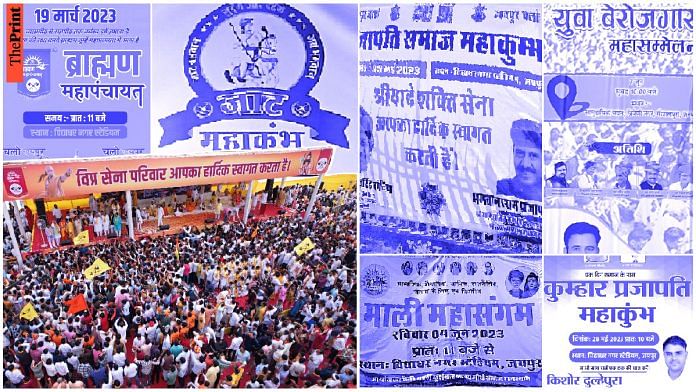Jaipur: In caste-fragmented Rajasthan’s election season, mahasabhas rule the politics. Over the past four months, Jaipur has been stormed by grand assemblies of Jats, Rajputs, Brahmins, Gurjars, Kumhars, Kumawats, Ahirs, and Malis. Many more are yet to come. At every grand rally, demands for election tickets, caste-based job reservations, and that all-important term ‘respect’ have been raised. And then, two weeks ago, participants at a mahasabha took a new turn — they said they were ‘casteless’.
It was the Yuva Berojgar Mahasammelan, or the grand assembly of the unemployed.
“How long will you keep taking the name of caste? Jobs and future are more important,” said Yatin, 25, from a crowd of thousands standing in the scorching Jaipur heat. “We have gathered here leaving caste behind.”
Rajasthan’s pre-election political tradition involves mega meetings of tens of thousands of people pressuring political parties with various demands. With the Narendra Modi government’s push toward creating sub-categories of OBCs and the BJP’s focus on the community in the run-up to the assembly election, newer factions are flexing their mahasabha muscles. It is the politics of blackmail by other means – nobody says it outright, but the fear of losing community votes among parties if they don’t favour them lurks in the background. Leaders make a beeline to attend these meetings to be seen with different caste groups.
For job-seekers, creation of new opportunities is hardly the solution as entrance examination is just another source of worry. Question papers on 26 instances have been leaked in Rajasthan in the last 10 years even as over one lakh posts across government departments remain vacant. Moreover, job-seekers want the state to prioritise local citizens, particularly the caste groups they represent, to fill up these vacancies. They also demand withdrawal FIRs filed for involvement in past protests.
Rallies by caste groups have been held in the past as well, but the Yuva Berojgar Mahasammelan has brought new hope among the youth. This is the first time Rajasthan’s unemployed men and women have gathered in such an organised manner.
“Every election in Rajasthan has been fought in the name of caste and religion. But this time, it should be held in the name of employment. We will go with the party that fulfils our demands,” said Upen Yadav, the president of Rajasthan Berojgar Ekikrit Mahasangh, to the crowd, which roared back in approval.
At 26.4%, Rajasthan has the second-highest unemployment rate in India after Haryana (26.8%) in March 2023, according to the Centre for Monitoring Indian Economy (CMIE) report.
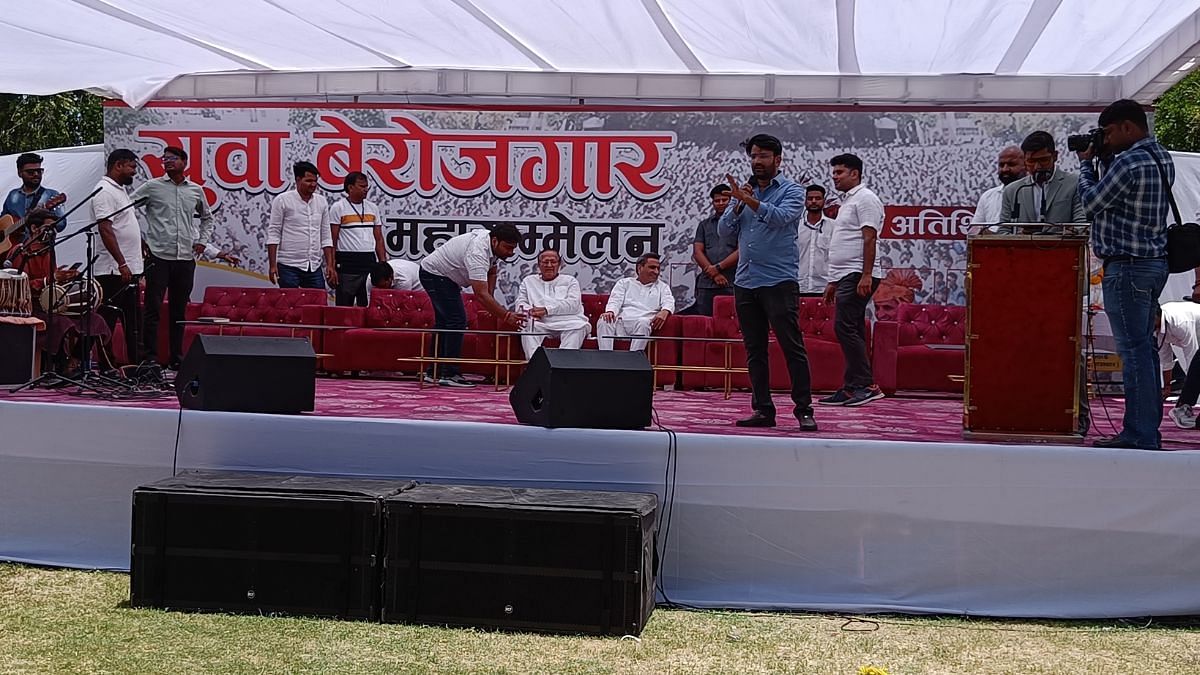
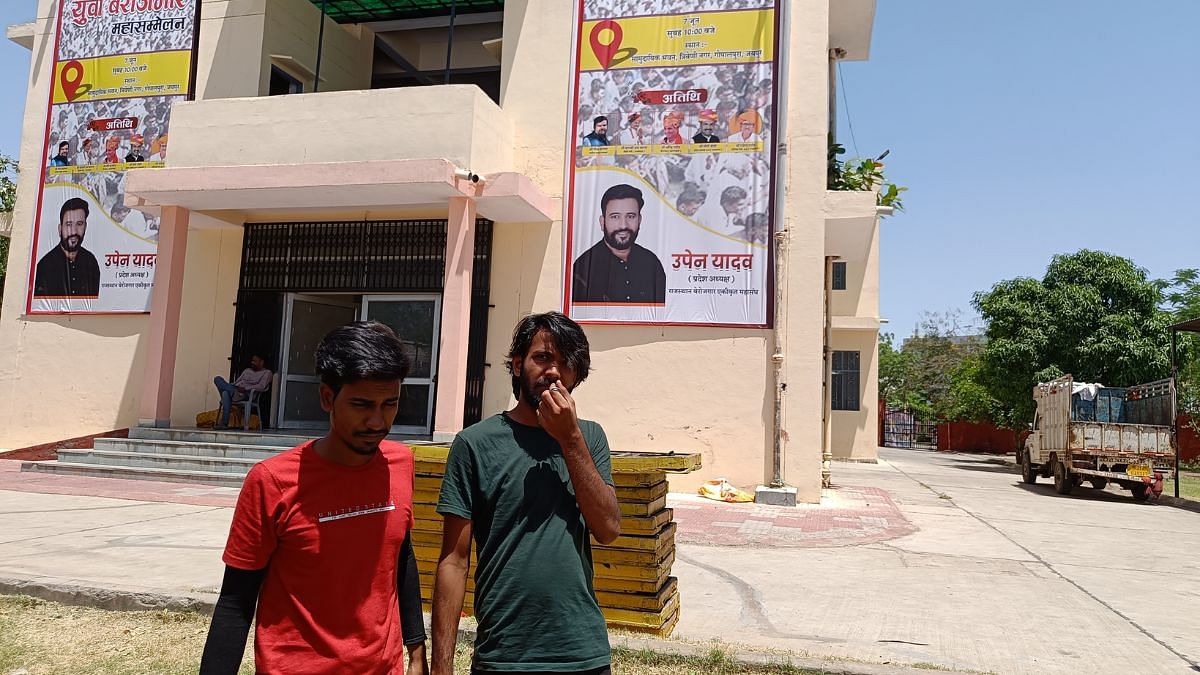
Also read: Not Kali, Kela, Sola — Dalits in Rajasthan village are at war against insulting names
Mobilising OBC castes
OBC caste groups wield influence in more than 100 assembly seats in Rajasthan. But this is the first time that smaller castes like Mali, Kumhar, and Kumawat are hosting mahasabhas with a list of their own specific demands: conduct a caste census, increase OBC reservation from 21% to 27%, and ensure political representation in proportion to the population. These gatherings are a show of strength similar to the big rallies held by dominant caste groups such as the Gurjars, Jats, Brahmins, and Rajputs.
“In the last four-five years, there has been an awareness among small castes about their astitva (existence),” said Professor Naresh Dadhich, former head of the department of Political Science, University of Rajasthan.
According to political analyst Om Saini, by dividing the OBC castes, the BJP has revived class and caste identity. “This has not only divided the sub-castes but also polarised the votes at the micro level,” he said.
Since March, more than ten caste groups have held mahasabhas with MPs/MLAs and leaders of both Congress and BJP such as Lok Sabha speaker Om Birla, UP deputy CM Keshav Prasad Maurya, and Rajasthan CM Ashok Gehlot in attendance. Gehlot himself belongs to the OBC Mali caste group.
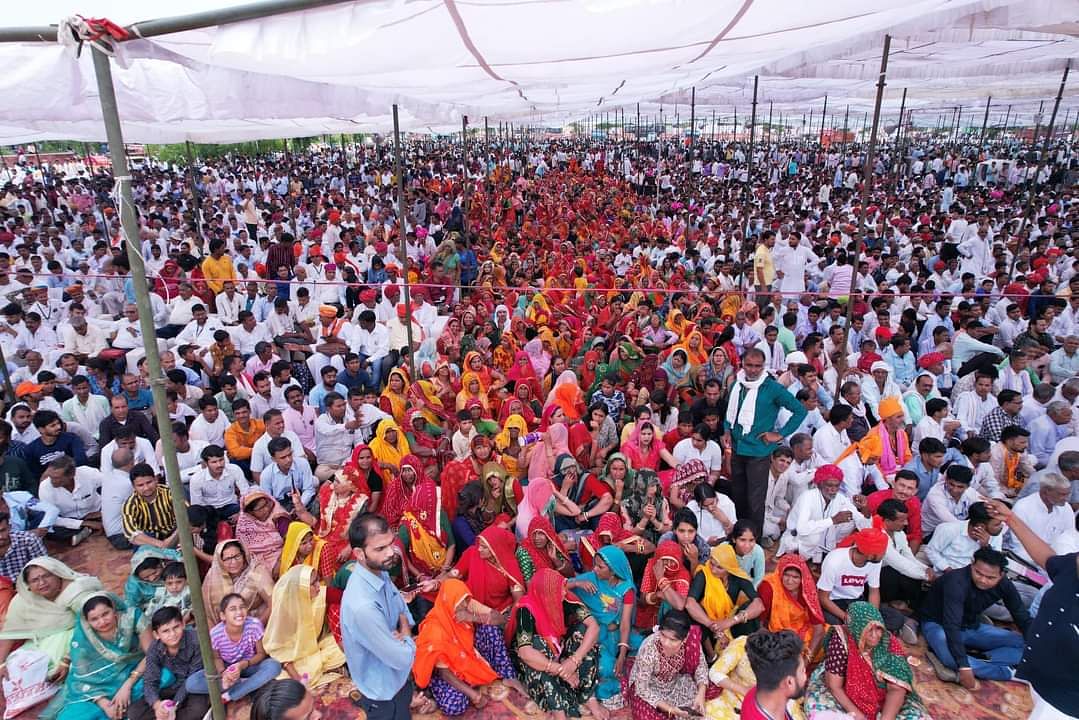
And caste groups freely voice their grievances before the political parties. They are not waiting for election campaigns when politicians would visit them and make promises. In the 2018 assembly election, the BJP fielded six candidates from the Mali community, while the Congress fielded five. This time, the caste group is demanding 20-20 tickets from both parties besides 12% reservation in government jobs and educational institutes.
“Earlier, we used to personally meet the leaders and raise the demands but to no avail. That’s why we have now chosen the option of shakti pradarshan. Shakti me hi shakti hoti hai (there is power in showcasing the strength),” said Chuttanlal Saini, president of Mali Mahasabha.
More than half of Rajasthan’s population is OBC. However, it is a divided community today.
“The upper castes are loyal to the BJP, while Dalits and Muslims are united in favour of Congress. But the votes of Jats and OBCs have shifted from one party to another. Both BJP and Congress will be primarily eyeing [the support of] these floating-voters,” professor Sanjay Kumar, the director of Centre for the Study of Developing Societies (CSDS), wrote in Dainik Bhaskar.
This is evident in the 2018 assembly election result. Jat candidates (comprising 9% of Rajasthan’s population) won 37 seats, Rajputs (6%) in 17 seats, and OBCs 35 seats. Jats, Rajputs, Gujjars, Meenas, Brahmins, and Muslims accounted for 106 MLAs in the 2018 election, while 59 seats were reserved for SC/ST. Congress fielded 15 Muslim candidates, out of which seven won.
The BJP’s attempt to woo the OBC vote started gaining momentum last year. In September 2022, the party held its OBC Morcha meet in CM Gehlot’s hometown Jodhpur, where Union Home Minister Amit Shah delivered the inaugural address. PM Modi has visited Rajasthan five times in the past eight months.
Congress spokesperson RC Choudhary views this trend as a sign of a ‘healthy democracy’. “Social organisations have been formed at every level in the state, and keep in touch with the leaders,” said Choudhary.
But BJP’s leader of opposition in the state assembly, Rajendra Rathore, said that while caste mahasabhas before election are part of a long-established political tradition in the state, the increasing division of votes along caste and social lines is not good for a democracy.
“It has become a political compulsion for leaders to go to these mahasabhas. I too am involved in this,” said Rathore. Despite his criticism, he cannot ignore the clout these groups hold and the political compulsion of leaders to stand with their respective communities.
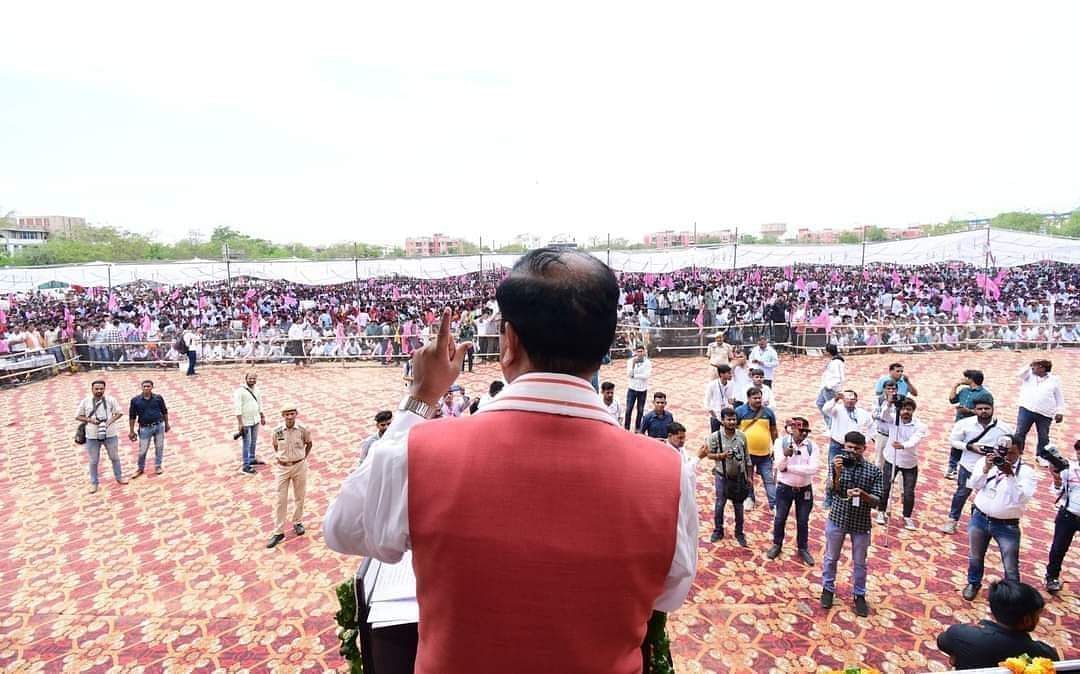
In the late 1980s, trade unions, farmers’ unions, and women-led organisations held sway over elections. But political analyst Om Saini says their voices dissipated once caste groups began working for their own interests.
“The one who takes care of caste equations holds the power. Ashok Gehlot has shown this again and again. It is seen during ticket distribution how much influence the candidate holds in the caste [group they belong to],” said Saini.
Gehlot has attempted to counter this narrative by reiterating that his chief ministership is a reflection of the affection and blessings from all sections of society. He is the only MLA representing the Mali community in the Rajasthan assembly.
“I know that no one is made the chief minister on the basis of caste,” he said in December 2022 amid demands from a section to make Sachin Pilot the chief minister of Rajasthan.
Also read: For VicKat, Rajasthan an ultimate wedding destination. For Dalits, it’s most dangerous
Politics of mahasabhas
Vidyadhar Stadium, barely 12 km from Jaipur Vidhan Sabha, has emerged as the Grand Central for these mahasabhas. Almost every month, hundreds of vans, trucks, and cars ferry thousands of people from Sikar, Jalore, Jodhpur, Pali, Bikaner, and other parts of Rajasthan.
Saini describes this style of crowd mobilisation as the “Chautala model”.
“Om Prakash Chautala used to mobilise crowds through khap panchayats in Haryana in a similar manner,” he said.
Mahasabha organisers charter private helicopters to strew flowers on the heaving masses. Singers entertain the audience while drumming up fervour and caste pride, and drone cameras record the event for posterity. More often than not, the songs—set to Haryanvi beats—tap into caste and religious sentiment. In the Brahmin mahasabha, ‘Kaho garaj kar hum hindu aur hindustan hamara hai‘ was played while actor Ashutosh Rana’s poem ‘Sant bhi mai hu, ant bhi mai hu, aadi aur anant bhi mai hu‘ has also used in remix mode. In the Jat mahakumbh, the audience danced to songs like ‘Jindabad Jawani, Jindabad Kisani’. In Yuva Berojgar Mahasammelan, romantic Bollywood songs such as B Praak’s Mann Bharrya and Nusrat Fateh Ali Khan’s Tumhen Dillagi Bhool Jaani Padegi were played.
Massive posters line up the roads leading to the stadium. The on-ground marketing blitz is supported by social media campaigns on Twitter and Facebook. Prominent leaders record videos asking people to attend these mahapanchayats. Union Minister Nitin Gadkari and Dhirendra Krishna Shastri, for instance, have posted videos for the Brahmin mahapanchayat on Twitter.
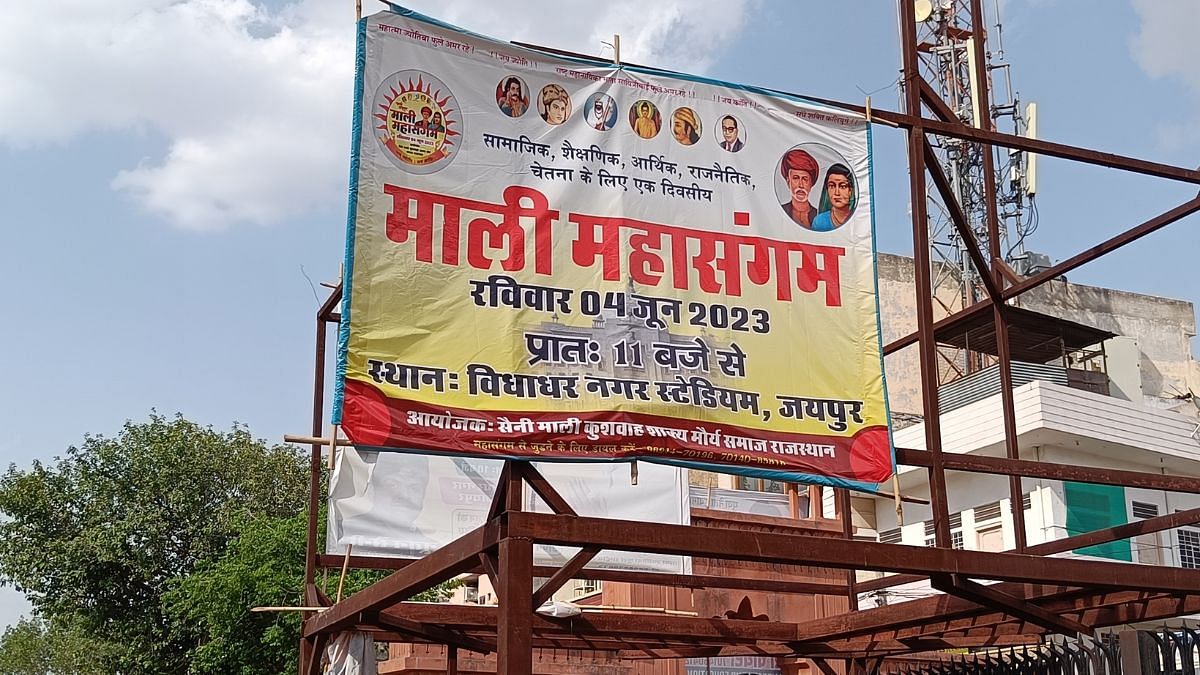
The organisers are Bhamashahs (rich people), businessmen who donate lakhs of rupees for the mahasabhas. The cost of the one-day Brahmin mahapanchayat was more than Rs 1 crore, said a source requesting anonymity.
At the Kumawat mahapanchayat held at Vidyadhar Stadium on 21 May, the organisers played a 30-minute documentary to create awareness about the caste group.
“This caste is less educated, less aware and there was no political gain. We will not allow our caste to be left behind. We will defeat the party that won’t give us a ticket this time,” said one of the organisers, Chhoturam Kumawat, who is also planning to form a joint organisation of most backward castes in Rajasthan. The Kumawat community has been voting for Rajputs in the past.
On stage, representatives of caste groups speak in hyperbole—the more provocative their pronouncements, the louder the cheering of the crowd.
“We will get beheaded, but we will never compromise with the self-respect of Kumhar-Prajapati Samaj,” said Kishore Dulhepura, the state president of Kumhar-Prajapati Mahasabha.
In the run-up to the election, there is an urgency in their demands. They know that once the vote is cast, they will be ignored again—until the next election.
“Chunav ke baad kaun sunega? (Who will listen to us after the election?) That’s why this is the best time to voice our demands. We work like a pressure group. It is our responsibility,” said Dulhepura.
But the president of Jat Mahasabha, Rajaram Meel, disagreed that caste gatherings act as pressure groups. “When Sachin Pilot could not create pressure in all these years, what will they (caste groups) do?” he said. After the result of the 2018 assembly election, the differences between Gehlot and Pilot grew. In April this year, Pilot even sat on a day-long dharna against his own government, demanding action against the alleged corruption that happened during the BJP government in Rajasthan. The relationship worsened so much that the Congress high command has had to intervene several times to resolve the dispute between Gehlot and Pilot.
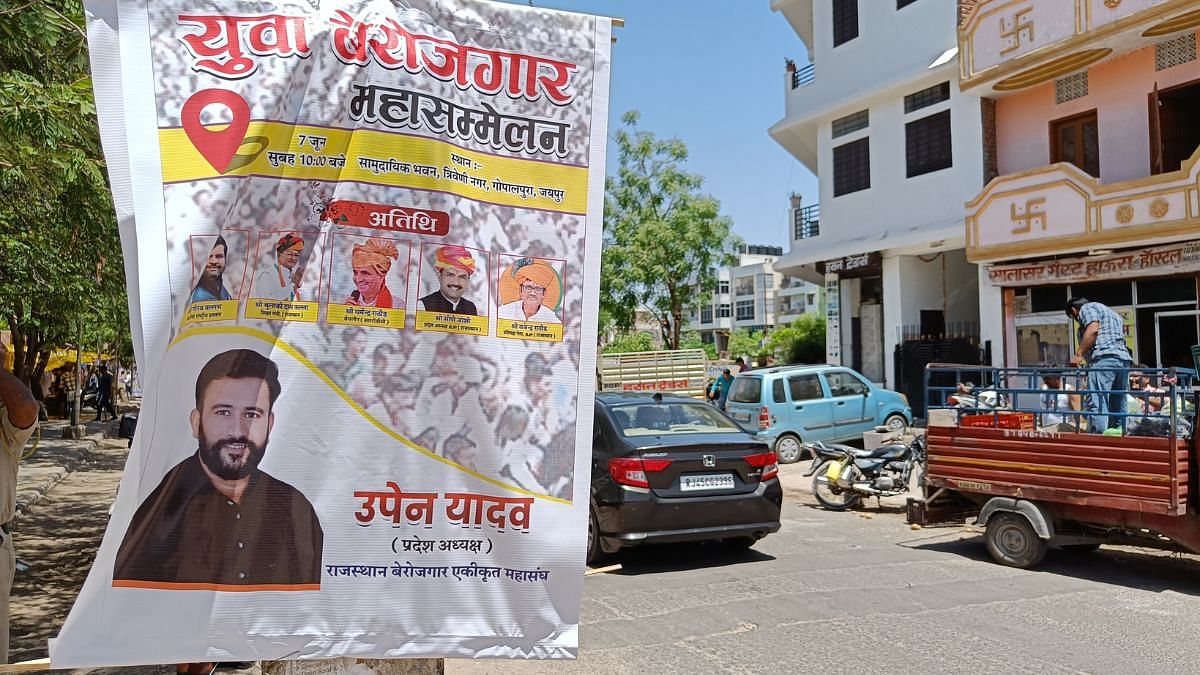
Also read: Violence goes viral — Dalits in Rajasthan have a new tool against atrocities, their phones
A new wind
The Jat Mahakumbh opened the season of gatherings in Jaipur on 5 March, with the tagline: Ek din samaj ke naam (a day dedicated to the community). It’s been three months since the event, but mahasabha posters of Bhagat Singh, Chaudhary Charan Singh, and Maharaja Surajmal dominate the cityscape, dangling from electric poles, wires, and roof tops.
Jat Mahakumbh president Rajaram Meel insists that the mahasabha is not political but social.
“We also raised issues such as banning funeral feasts, child marriage, and dowry,” he said.
Jats exert their influence in 14 of Rajasthan’s 50 districts. In the previous assembly election, 37 MLAs from the community were elected. By making Govind Dotasara the state president, the Congress wants to win the community’s support. However, the BJP has made the Jats unhappy by removing Satish Poonia, a Jat leader, from the post of state president.
Three days before the Jat Mahakumbh, the Gehlot cabinet formed the Veer Tejaji Welfare Board, which was one of the items in the organisers’ agenda for the rally. To woo OBC and SC/ST communities, the Gehlot government has formed more than eight boards over the past one year. Guru Nanak Dev Sikh welfare Board, Veer Tejaji Kalyan Board, Gadia Lohar Kalyan Board, Leather Craft Development Board, State Rajak Welfare Board, Rajya Mahatma Jyotiba Phule Board, SriKrishna Board for Yadavs, and Lok Kala Board are some of the newer ones formed by the CM. Many of these boards, though, neither have a chairperson nor members. Now, the youth of the state are demanding that the CM should form a board for them as well. According to a report, the government has made 15,000 political appointments in four years.
Most caste groups have their own religious symbols that unite them. The Brahmin community unites in the name of Lord Parshuram, the Jat community in the name of Veer Tejaji, the Kumhar community in the name of Sri Sri Yaade Mata, and the Gujjar community in the name of Devnarayan ji.
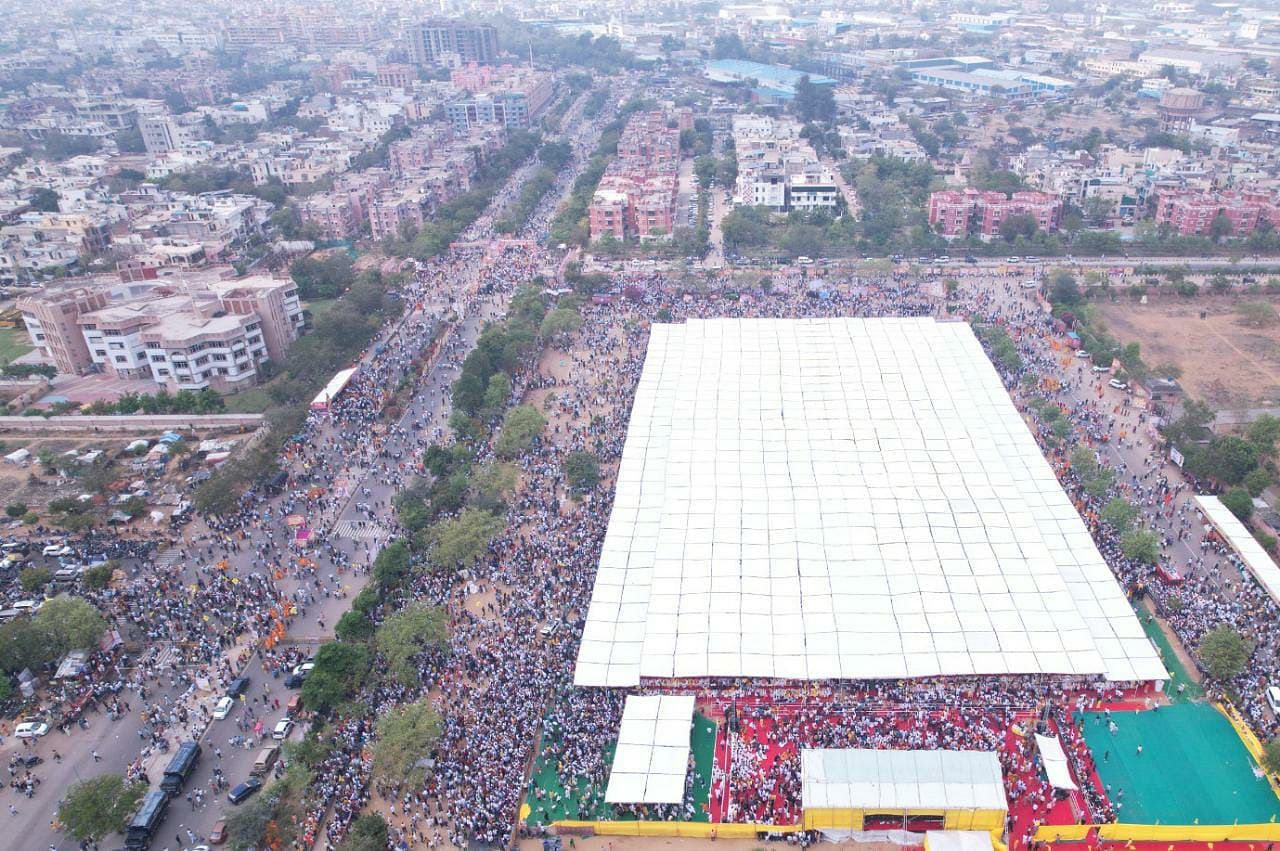
“Castes are uplifted through these boards. The Kesh Kala Board was formed during the BJP rule but it was functionalised during the Congress government. There is also a plan to make a tourist hub in the state through these boards,” said Congress spokesperson RC Choudhary.
The OBC mahasabhas, with their demand for a caste census and political representation, have become points of contention, as upper caste groups are demanding an increase in the EWS reservation from 10% to 14%. This demand was raised in the Kesariya mahapanchayat of Rajputs held in April and the Brahmin mahapanchayat in March organised by Vipra Sena.
“There have been four CMs from our community but after 1980, the situation kept getting worse. Now, the participation [of Brahmins] in the assembly is also declining — from around 60 MLAs to 16-17,” said Vipra Sena president Sunil Tiwari.
A senior Jat leader, speaking on the condition of anonymity, said in most of these panchayats, there is only ho-halla (ruckus). “They don’t lead to any social change.”
But mahasabha leaders are banking on the winds of change and an emboldened community of youth.
“The opposite of Yuva is Vayu and when the Vayu blows, a lot happens,” said Upen Yadav of Rajasthan Berojgar Ekikrit Mahasangh.
(Edited by Prashant)


